An interview with surfing legend Rob Machado and the team behind his incredible new custom-built surf van.
Travelers with different paths have been outfitting vans to suit their needs for decades, whether they be a businessperson looking to create a mobile workspace, an explorer with a need for an on-the-go base camp, or one of countless others who need a personalized vehicle that can fulfill their needs wherever they find themselves.
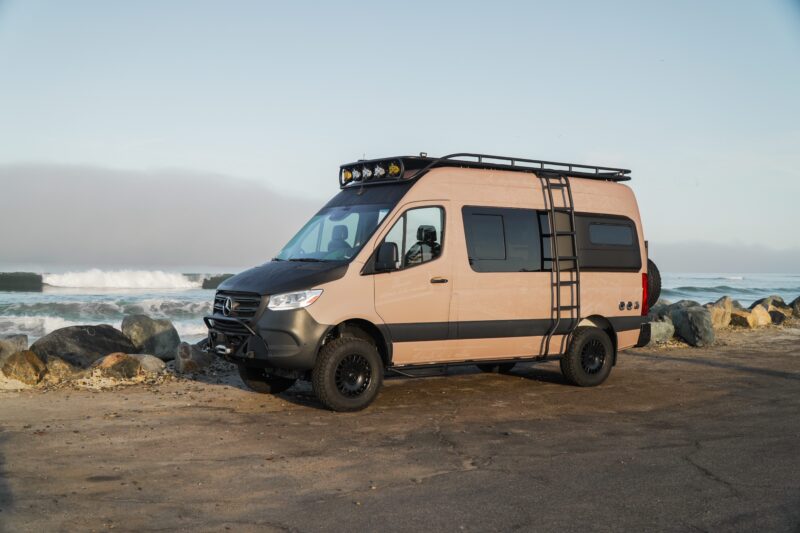
Rob Machado, a legendary professional surfer, is no stranger to either adventure or the need for a retrofitted vehicle that aids him in his pursuit of finding said adventure. For years, Machado had been traveling from surf breaks in what can only be described as a gnarly 1978 Dodge Tradesman van colloquially named the “Creeper.” Sure, the exterior and interior of the van may have been a bit shabby, but it fulfilled his basic surfing needs: it started, drove, had a bed, and could fit a decent quiver of boards.
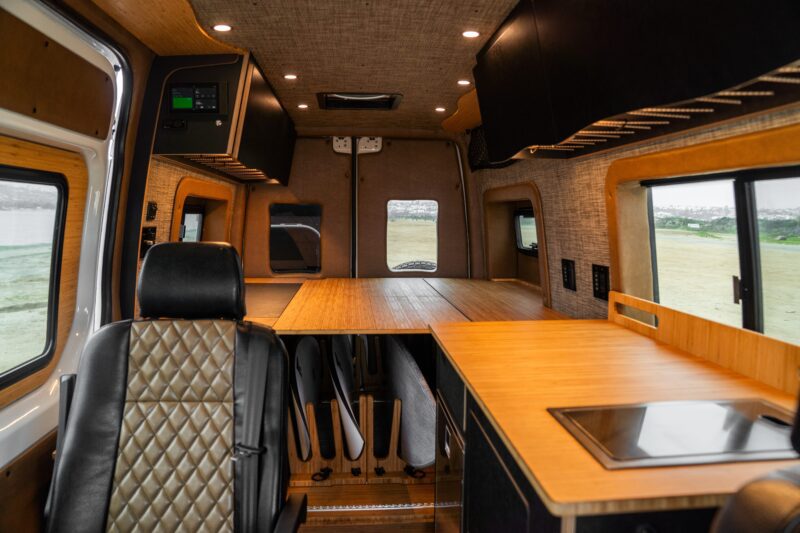
A vehicle from the ’70s in shoddy condition would only get him so far, and now he’s decided it was time to evolve how he travels entirely. The spark was Machado’s penchant for diving down a rabbit hole filled with social videos of van builds from manufacturers across the globe. However, the adventure truly began when he put in a call to Rogue Van Company’s (RVC) Santiago Fileta. Now, Machado and the team at RVC have created what should be considered the ultimate surf-mobile. But, don’t let Machado’s surfing career fool you as the van he has created together with RVC is ready-built for excursions of all kinds, from snowboarding down powder-covered mountains, to biking down them during the summer months, or wherever your expeditions take you.
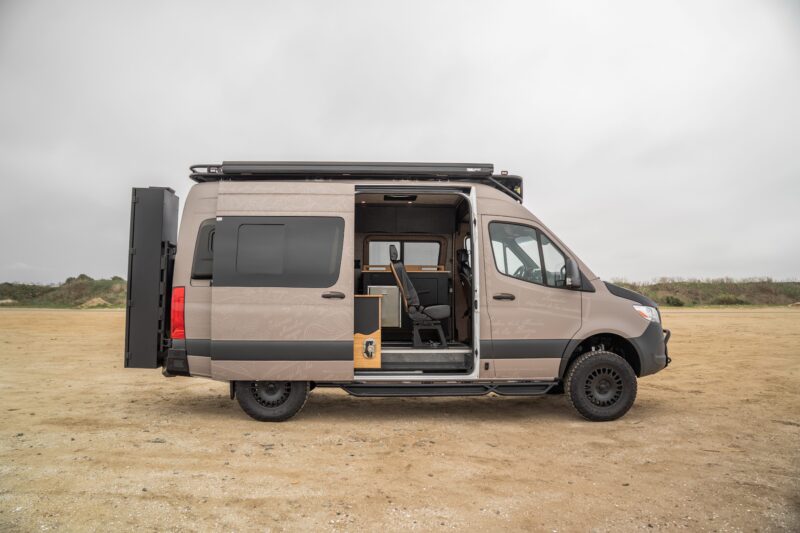
From the front to the rear, this van is a perfect example of RVC’s ability to take a customer’s vision and bring it to life. Throughout the entire journey of this build, RVC was in constant communication with Machado to ensure the final product was what he had envisioned. The result is the “Rogue Wave,” a van that takes Machado’s ethos and embodies it all into vehicle format.
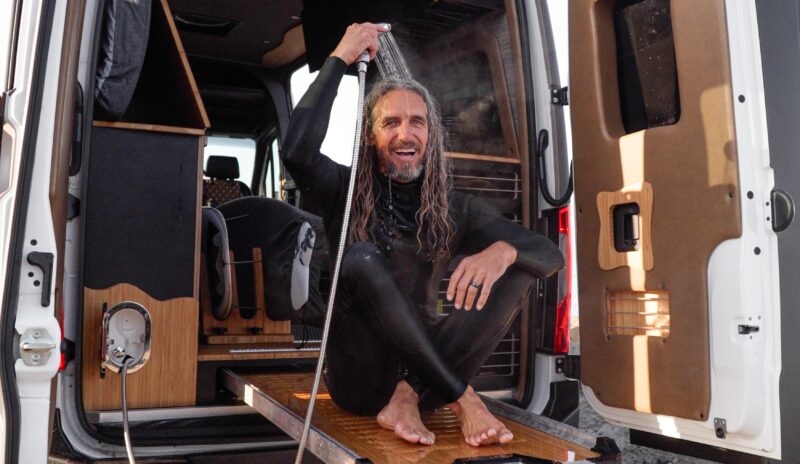
I recently had the pleasure of speaking with Machado, Fileta, and Aaron Tromp to get a behind-the-scenes look at the Rogue Wave and the entire process that took place to bring it to life.
Edward Jones (EJ): Rob, you’ve been driving around in your “Creeper” van for quite some time now. What was the catalyst that made you decide to partner with RVC to build your new van, the Rogue Wave?
Rob Machado (RM): It’s been a long journey for me. I’ve always been geeking out on van builds worldwide. Since RVC is right down the road here in San Diego and is known as one of the best builders, it felt like the most obvious choice. Plus, the connection with Santiago was instant—we vibed immediately.
Santiago Fileta (SF): Yeah, we really delved deep into Rob’s lifestyle, surf routines, and how he uses his vehicles. It wasn’t just about building another custom van; it was about capturing Rob’s entire ethos and creating a limited edition model others could own.
EJ: Rob, what standout features in this new van excite you the most?
RM: Definitely the removable kitchen—it’s like an airplane beverage cart. You can maneuver it inside or roll it outside for cooking at the beach. Another favorite is what I call “walking the plank,” a pull-out bamboo deck from the back door. It’s perfect for showering off after surfing without dragging sand inside.
SF: Normally, when we build a bed platform in a van, we just include cabinets, but for this one, we also included a bench built into one, which was challenging to pull off engineering-wise. There are also removable captain’s chairs that can swivel on a DOT-approved, billeted aluminum machined floor. And let’s not forget the incredible board storage options. The van is designed to hold multiple boards with various rack systems. Plus, we customized storage meticulously because Rob loves to stash his gear.
RM: (laughing) Santiago calls me a squirrel—he built tons of clever stash spots for my “acorns”—wax, sunscreen, tools, everything has its spot.
EJ: How involved were you, Rob, in the design and building process?
RM: Extremely involved. Santiago even came to sit in my old van, understanding every detail of my lifestyle and getting an idea of how I “existed” in the van itself. We had countless discussions, tweaking and refining ideas to perfect everything. Whenever I asked if something was possible, they would look at me like I had three heads at first, but then I could see the wheels turning, and he loved the idea of a challenge. It was a fun process, you know, like watching it evolve, seeing what is possible, what we can pull off, and just bringing these ideas to life.
SF: This wasn’t just another custom build. We iterated everything during the design stage to ensure Rob’s van was the most nuanced and functional it could be, right from the first model.
EJ: How adaptable is this van for different uses?
Aaron Tromp (AT): It’s incredibly versatile. It’s not just for surfing, but also snowboarding, mountain biking, and family trips. We integrated seating and sleeping configurations, including hammocks and removable seats, to accommodate Rob’s family and friends. We also included the Alpine box at the rear—a massive external box designed initially for snowboards. Inside, there’s a wetsuit drying system with a built-in fan, perfect for drying gear or storing dirty snowboards.
SF: Absolutely. It’s built for adventures, whether on the beach or in the mountains. You don’t have to change anything post-purchase; it’s ready for any adventure from day one.
EJ: Rob, was there a non-negotiable feature you had to have?
RM: Hot water, multiple access points—absolutely crucial. It might sound strange, but as much as I love the beach, I hate sand inside my van. Keeping it clean was a priority.
SF: We even built a hidden bench into the bed system. Rob needed a place to comfortably conduct interviews or relax, which was challenging engineering-wise but turned out fantastic.
EJ: Any advice for someone wanting to go through this process?
RM: Think big but be realistic about space. RVC proved that anything was possible—even concepts never done before. Santiago embraced the challenge entirely. But also, you’ve got to be open-minded. We brought tons of ideas to the table, but in reality, you’re dealing with a tight space. You’re in a van. Still, I’m proud of everything we were able to accomplish in the end, bringing concepts to life that had never been done before.
EJ: What’s next for the Rogue Wave van series?
RM: We’re building a limited run of 10 vans. Each comes with a custom surfboard shaped by me, along with some additional goodies. We’re planning a cool owner’s community and a surf trip getaway for everyone who purchases one.
EJ: Thanks so much, guys. I can’t wait to see these vans out there and hopefully join you all on that community surf trip!
RM: You’re invited! Appreciate your time.
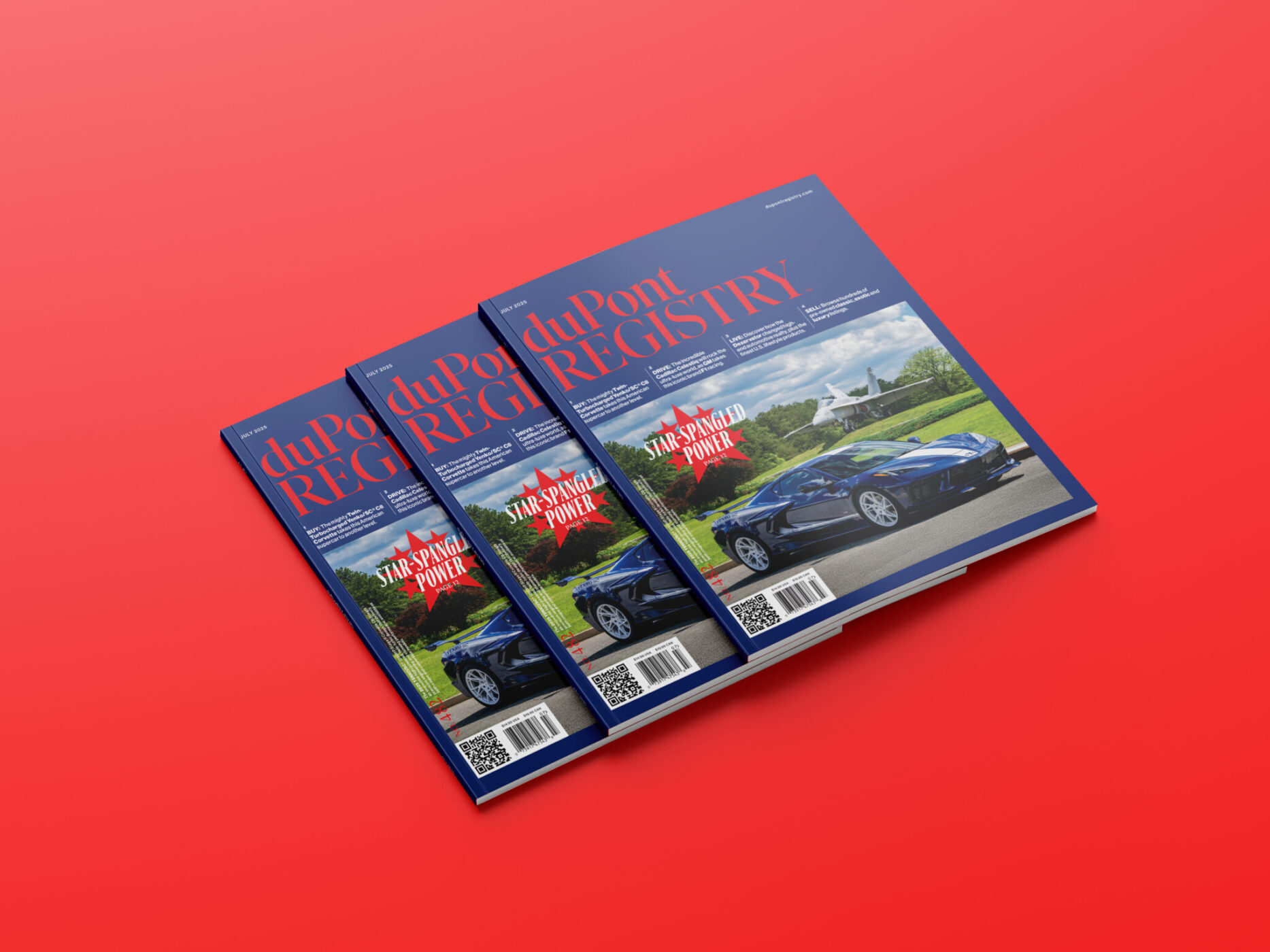
This article appeared in our July 2025 Issue.
Introducing the July 2025 issue of duPont REGISTRY, #482, starring the Twin-Turbocharged Yenko S/C C8. To get your hands on a copy, either buy a single issue or subscribe.

